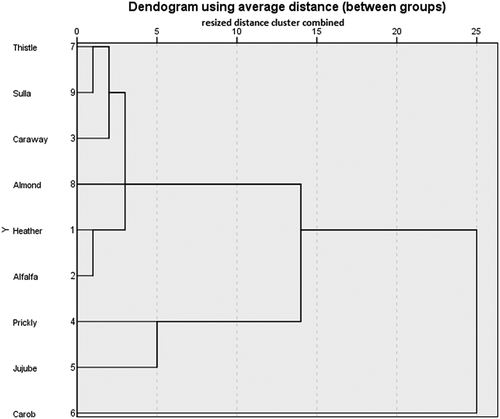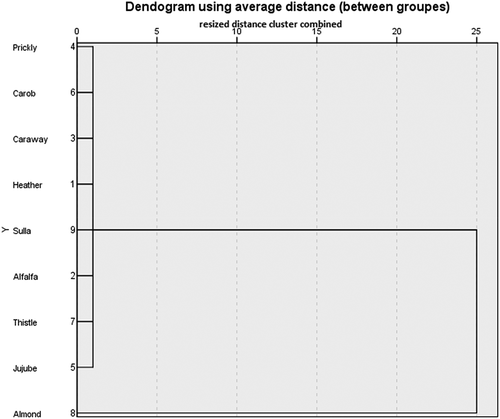Figures & data
Table 1. Honey samples and botanical origins from different regions of Tunisia.
Table 2. Physicochemical parameters of the monofloral honey samples of Tunisian origin.
Figure 1. Principal component analysis (PCA) of the physicochemical properties of southern Tunisian honeys.
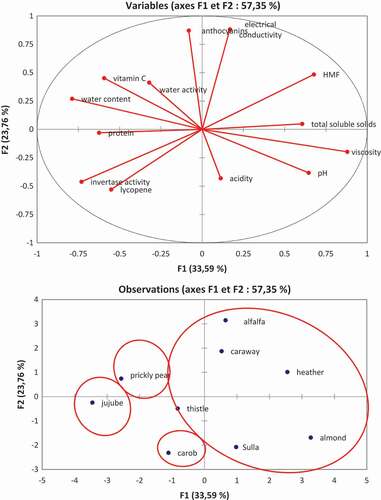
Table 3. Color parameters (L *.a * andb *) of the monofloral honeys samples of Tunisian origin.
Table 4. Composition in sugar of the monofloral honey samples of Tunisian origin.
Figure 3. Principal component analysis (PCA) of color parameters and sugars of southern Tunisian honeys.
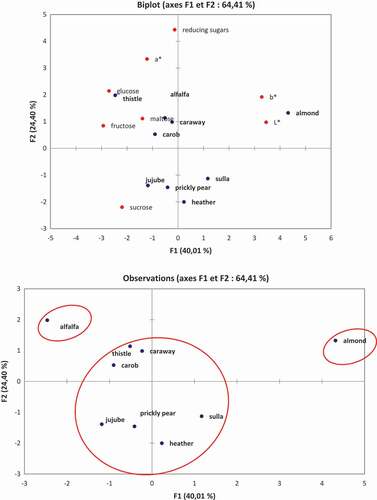
Figure 5. Analysis of the main components of the textural parameters and the activation energy of honeys of Tunisian origin (heather, alfalfa, caraway, almond, thistle, jujube, carob, sulla and prickly pear) .
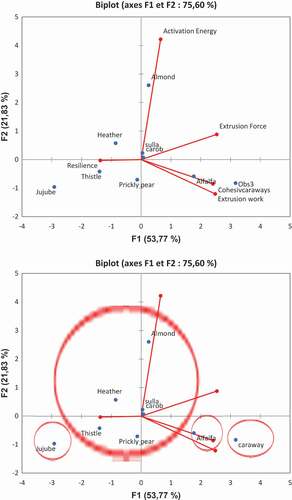
Figure 6. Cluster analysis of the textural parameters and the activation energy of southern Tunisian honeys.
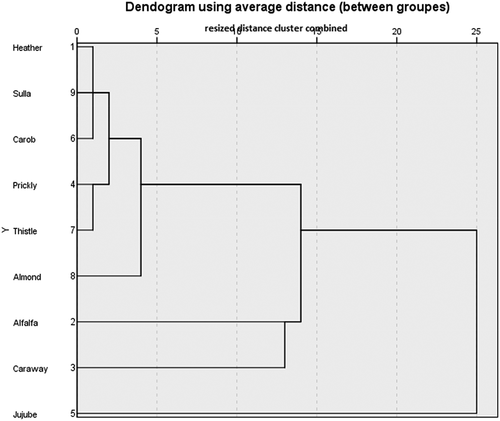
Figure 7. Flow curve: shear stress as a function of shear rate of monofloral honeys of Tunisian origin at 25 ° C.

Table 5. Arrhenius law parameters of the monofloral honey samples of Tunisian origin.
Table 6. Textural parameters of the different types of monofloral honeys of Tunisian origin.

